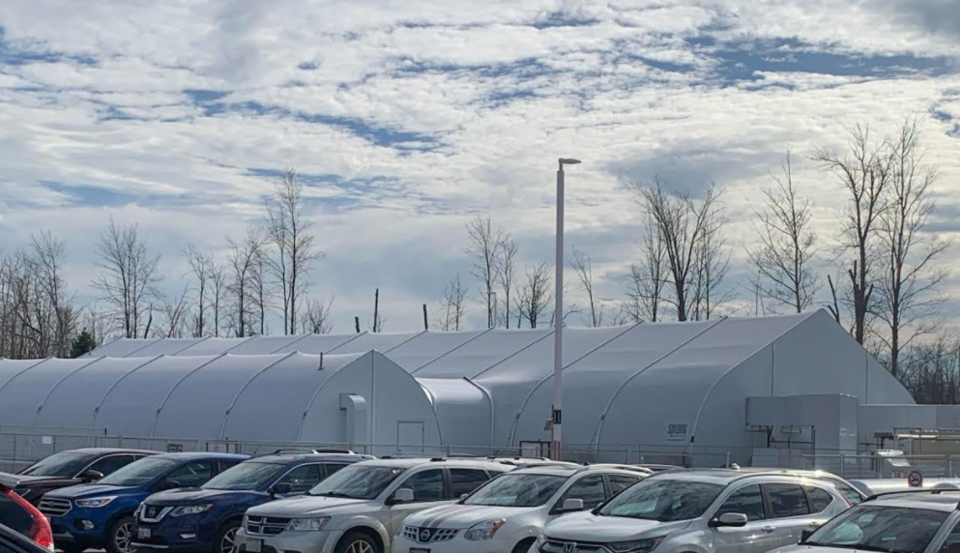The Royal Victoria Regional Health Centre (RVH) isn’t overwhelmed directly by the pandemic, but it is bracing for the worst and it has the support of the provincial government as flu season approaches and local communities continue to deal with COVID-19 infections.
A recently announced $12-million investment will provide a staff of 100 to run the 70-bed field hospital erected in the hospital parking lot.
It also allows the Barrie hospital to access the resources it needs to add another 29 beds in the permanent facility along Georgian Drive in addition to its current complement of 360 beds.
“We know that, collectively, it’s going to have a huge impact on our bed availability and occupancy in our organization,” said RVH president and chief executive officer Janice Skot. “These (beds) are somewhat scattered throughout the organization.”
The increased capacity — including medical, surgical, critical care and mental health beds — ensures that the hospital is braced to deal with any surge similar to that currently experienced by Toronto-area communities, she said.
The pandemic response unit, expected to open this month, is intended to serve regular medical patients with stays of three to five days.
While the field hospital is equipped and staffed like the main hospital, it is a temporary structure and doesn’t duplicate the design of the main facility, with its many doors and windows.
“It will be an excellent opportunity to decamp patients from any one of our hospitals so we can actually fill the hospital itself with more critically ill patients,” said Skot, adding that it's meant as a regional asset serving as a bit of an overflow. “Now we’re ready to operate it.”
RVH will also receive $275,000 to increase hours of operation for its MRI and CT scanners, which currently operate about 18 hours daily. This is expected to help ease the backlog created by cancellations during the first wave of the pandemic.
When the pandemic was declared in March, scheduled procedures were reduced, impacting the hospital’s occupancy. And the return to normal has been gradual with RVH now running 11 operating rooms.
“We have been moving to full activity at RVH,” said Skot. “Our occupancy is getting dangerously high, but nothing like it was pre-COVID, when we were sometimes at 125 per cent occupancy.”
Occupancy at RVH has been at 93 per cent this week.
Skot says the government has been supporting programs to help local hospitals deal with the pandemic and the community’s response to control it by being careful has ensured local hospitals haven’t become overwhelmed.
The funding, however, is temporary, and is intended to finance these additional programs only until March 31.
“The government has actually done a fantastic job of releasing funds to us over and above what anyone has estimated, given the significant financial impact of the pandemic,” Skot said, adding that she’s confident that if the need extends beyond the current fiscal year ending March 31, “the government will be listening.”
And although she calls it an overall positive financial picture, the impact to RVH’s bottom line is yet to be determined. There remains a distinct possibility that the health facility will run into the red this year for the first time in a decade.
Skot pointed out that although the funding is temporary, the staff being added will be permanent. With a staffing complement of more than 3,000, she is confident natural attrition and turnover will accommodate the new bodies when the additional funding runs out.
“We’re looking for quality people who want to build a career at RVH and we know that that takes permanent status,” she said. “We’ve hired a significant number of people in the last few months to manage all of our new processes.”
The challenge, currently, is that one-third of the medical beds at RVH are occupied by “alternate level of care patients” who should be discharged from the hospital, but can’t be safely transferred to a long-term care home or their own home with supports.
“If we could work with government on finding solutions to alternate level of care, I feel even more confident despite this collision of flu and pandemic and the winter that we might be able to operate within those safe levels,” said Skot.



